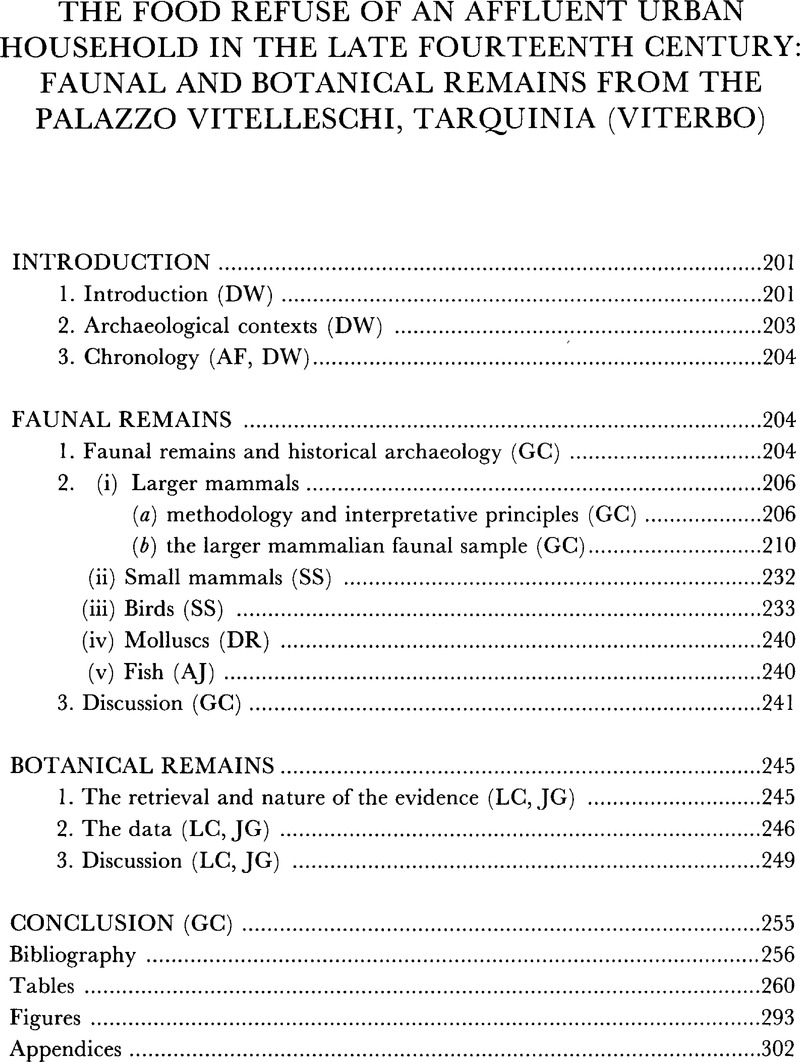Crossref Citations
This article has been cited by the following publications. This list is generated based on data provided by Crossref.
Light, Jan
2003.
Dog Cockle Shells as Occasional Finds in Romano-British Shell Middens from Newquay, North Cornwall, UK.
Environmental Archaeology,
Vol. 8,
Issue. 1,
p.
51.
Buonincontri, Mauro
Moser, Daniela
Allevato, Emilia
Basile, Boris
and
Di Pasquale, Gaetano
2014.
Farming in a rural settlement in central Italy: cultural and environmental implications of crop production through the transition from Lombard to Frankish influence (8th–11th centuries a.d.).
Vegetation History and Archaeobotany,
Vol. 23,
Issue. 6,
p.
775.
Corbino, Chiara Assunta
and
Albarella, Umberto
2019.
Wild Birds of the Italian Middle Ages: Diet, Environment and Society.
Environmental Archaeology,
Vol. 24,
Issue. 4,
p.
449.
Salari, Leonardo
Masseti, Marco
and
Silvestri, Letizia
2020.
Late Pleistocene and Holocene distribution history of the Eurasian beaver in Italy.
Mammalia,
Vol. 84,
Issue. 3,
p.
259.
Modlinska, Klaudia
and
Pisula, Wojciech
2020.
The Norway rat, from an obnoxious pest to a laboratory pet.
eLife,
Vol. 9,
Issue. ,
Puckett, Emily E.
Magnussen, Eyðfinn
Khlyap, Liudmila A.
Strand, Tanja M.
Lundkvist, Åke
and
Munshi-South, Jason
2020.
Genomic analyses reveal three independent introductions of the invasive brown rat (Rattus norvegicus) to the Faroe Islands.
Heredity,
Vol. 124,
Issue. 1,
p.
15.
Hulme-Beaman, Ardern
Orton, David
and
Cucchi, Thomas
2021.
The origins of the domesticate brown rat (Rattus norvegicus) and its pathways to domestication.
Animal Frontiers,
Vol. 11,
Issue. 3,
p.
78.
Munshi-South, Jason
Garcia, Joseph A.
Orton, David
and
Phifer-Rixey, Megan
2024.
The evolutionary history of wild and domestic brown rats (
Rattus norvegicus
)
.
Science,
Vol. 385,
Issue. 6715,
p.
1292.



